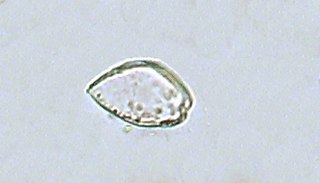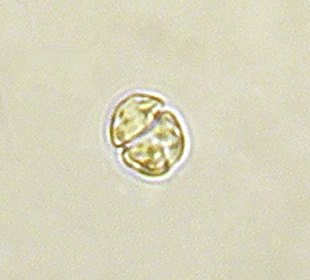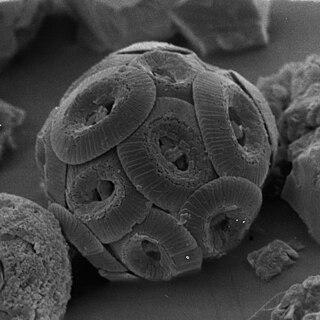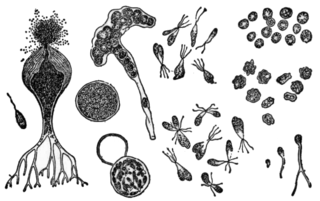| Petalonema | |
|---|---|
 | |
| Petalonema alatum | |
| Scientific classification | |
| Kingdom: | Bacteria |
| Subkingdom: | Eubacteria |
| Phylum: | Cyanobacteria |
| Class: | Cyanophyceae |
| Order: | Nostocales |
| Family: | Microchaetaceae |
| Genus: | Petalonema Berkeley ex Kirchner, 1898 |
| Species | |
see text | |
Petalonema is a genus of cyanobacteria. These species occur in freshwater habitats, on rocks, in soil, and as epiphytes. [1]
A genus is a taxonomic rank used in the biological classification of living and fossil organisms, as well as viruses, in biology. In the hierarchy of biological classification, genus comes above species and below family. In binomial nomenclature, the genus name forms the first part of the binomial species name for each species within the genus.

Cyanobacteria, also known as Cyanophyta, are a phylum of bacteria that obtain their energy through photosynthesis and are the only photosynthetic prokaryotes able to produce oxygen. The name cyanobacteria comes from the color of the bacteria. Cyanobacteria, which are prokaryotes, are also called "blue-green algae", though the term algae in modern usage is restricted to eukaryotes. The cyanobacteria appears to have originated in freshwater or a terrestrial environment.

An epiphyte is an organism that grows on the surface of a plant and derives its moisture and nutrients from the air, rain, water or from debris accumulating around it. Epiphytes take part in nutrient cycles and add to both the diversity and biomass of the ecosystem in which they occur, like any other organism. They are an important source of food for many species. Typically, the older parts of a plant will have more epiphytes growing on them. Epiphytes differ from parasites in that they grow on other plants for physical support and do not necessarily affect the host negatively. An epiphytic organism that is not a plant is sometimes called an epibiont. Epiphytes are usually found in the temperate zone or in the tropics. Epiphyte species make good houseplants due to their minimal water and soil requirements. Epiphytes provide a rich and diverse habitat for other organisms including animals, fungi, bacteria, and myxomycetes.
- Petalonema alatum
- Petalonema crassum
- Petalonema crustaceum
- Petalonema densum
- Petalonema fluminalis
- Petalonema incrustans
- Petalonema involvens
- Petalonema pulchrum
- Petalonema velutinum

Petalonema alatum is a cyanobacterium. It was first described and drawn by the Scottish author Dugald Carmichael under the taxonomic name Oscillatoria allata in 1826. In 1833, Miles Joseph Berkeley re-published it under its current name Petalonema alatum. P. alatum produces a slime-like mucopolysaccharide in the form of interlocking slime funnels. The structure looks like a quill under the light microscope, which is where the species gets its name "alatum", meaning quill. These slime envelopes are up to 270 μm wide in diameter and are therefore visible by the naked eye as filiform formations. The habitats for this filamentous cyanobacterium are mainly wet limestone walls and creates together with other bacteria, microalgae, bryophytes and micromycets gray or gray-brown biofilms/growns. Populations of P. alatum have specialized cells - yellow heterocytes to bind atmospheric nitrogen which are in colour contrast to vegetative blue-green/turquoise cells in filamentous thallus.










